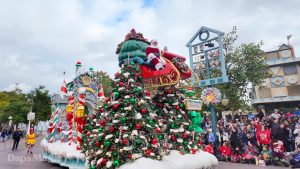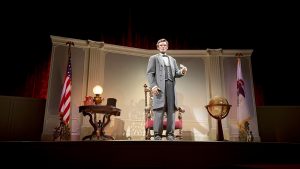Walt Disney Productions began making live action films at a time that American studios had begun placing a greater emphasis on location shooting. The 1960 Disney release Pollyanna was shot largely on soundstages in Hollywood, but several key sequences were shot on location in Santa Rosa and the Napa Valley. This column will be devoted to the memorable opening title sequence.

To establish both a time (a summer in the late nineteenth century) and a place (a small town in New England), the movie opens on a bucolic scene of boys skinny dipping below a railroad trestle. The Sulphur Springs railroad trestle of the Southern Pacific Calistoga Branch can still be found today near the entrance to St. Helena, California. When shooting began in July, 1959, the creek was quite low, so Disney Studio staff built a temporary dam and added thousands of gallons of water to create a perfect swimming hole.
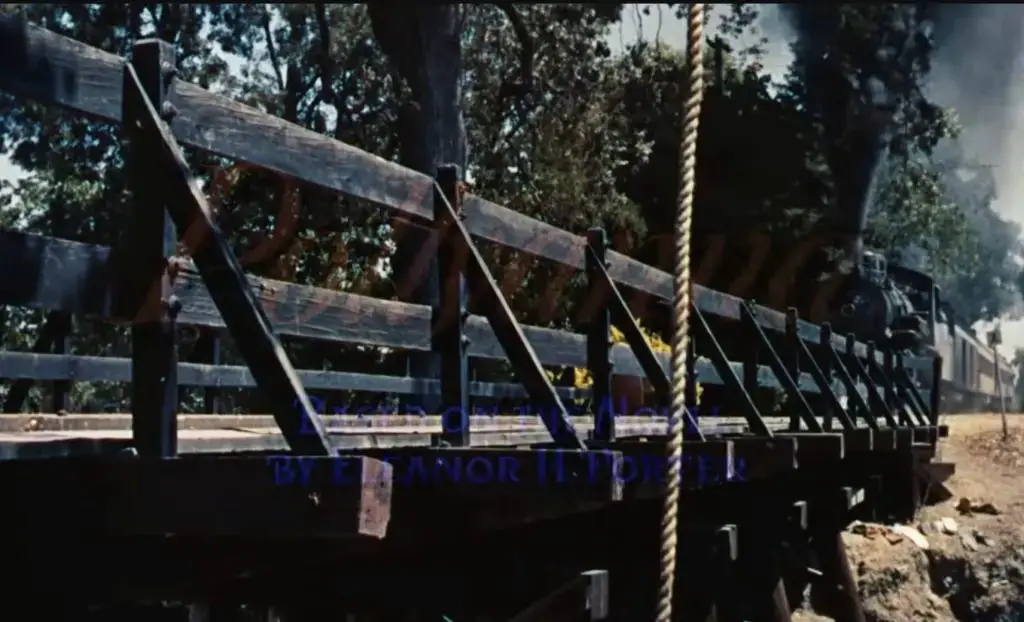
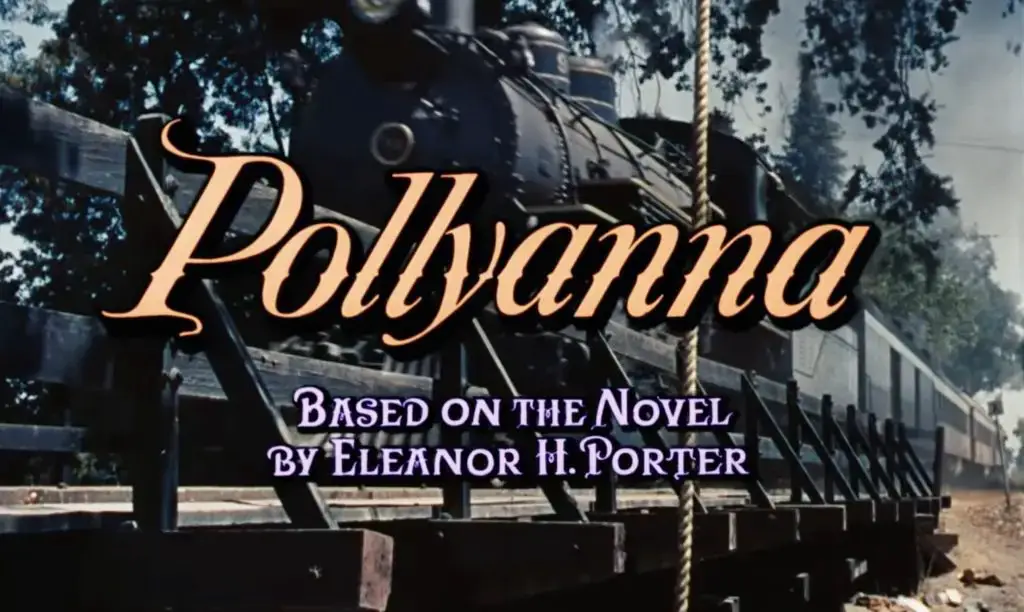
The train crossing the trestle was a museum piece in 1959, a veteran of the Western Pacific Railroad. Here it appeared as the Watertown and Eastern Railroad. It can still be found at the Western Pacific Railroad Museum, in its original, correct, paint scheme.
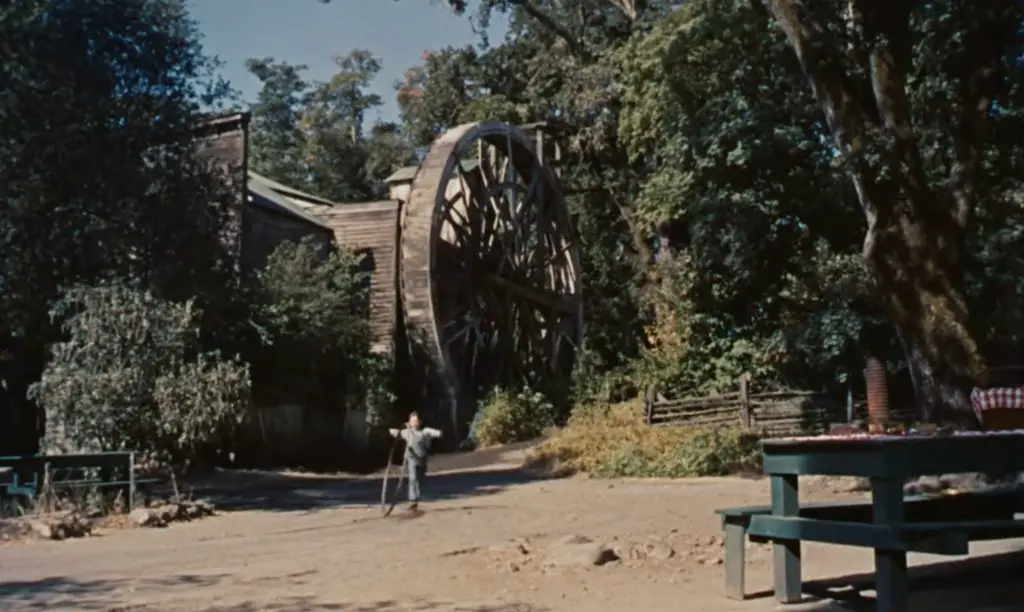
As the credits roll, we are introduced to young orphan Jimmy Bean, played by Kevin “Moochie” Corcoran. He first appears rolling a hoop past an imposing grist mill. This is the Old Bale Mill, which is in a state park three miles north of St. Helena in the Napa Valley.

Jimmy Bean continues rolling a hoop down a country road. This section of the sequence was shot on roads in the open countryside in Napa. Two private properties were also utilized as filming locations: the Luer Ranch and the Egan Ranch.

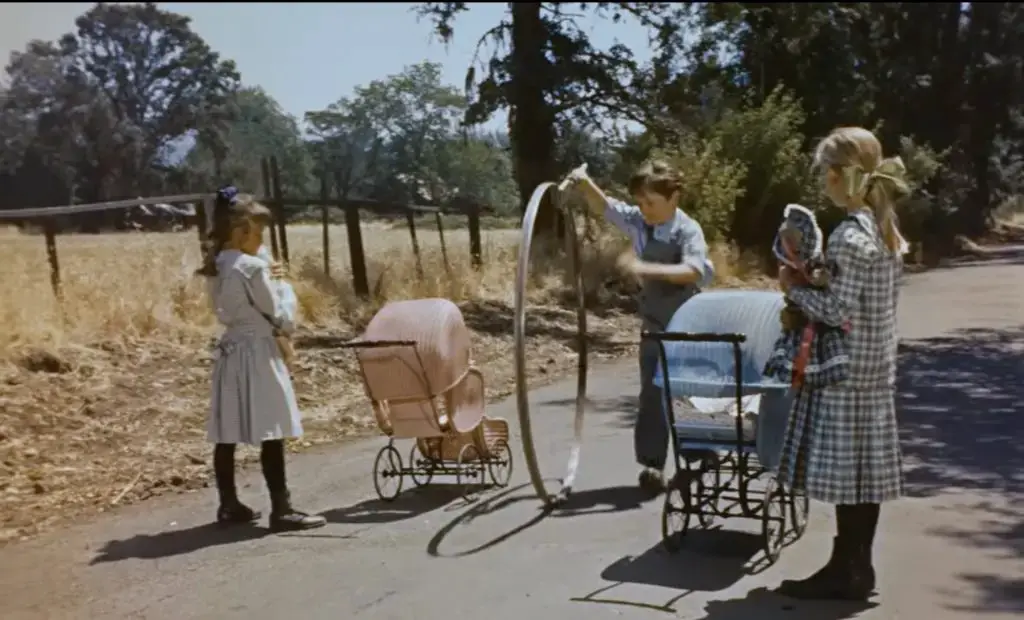
Two little girls out giving their dolls a walk in strollers are scandalized by Jimmy’s raucous approach. As they snatch up their dolls and step aside, the strollers are placed side by side. It is amusing to note that the carriages are placed further apart in the reverse shot, giving Jimmy ample room to pass between them.

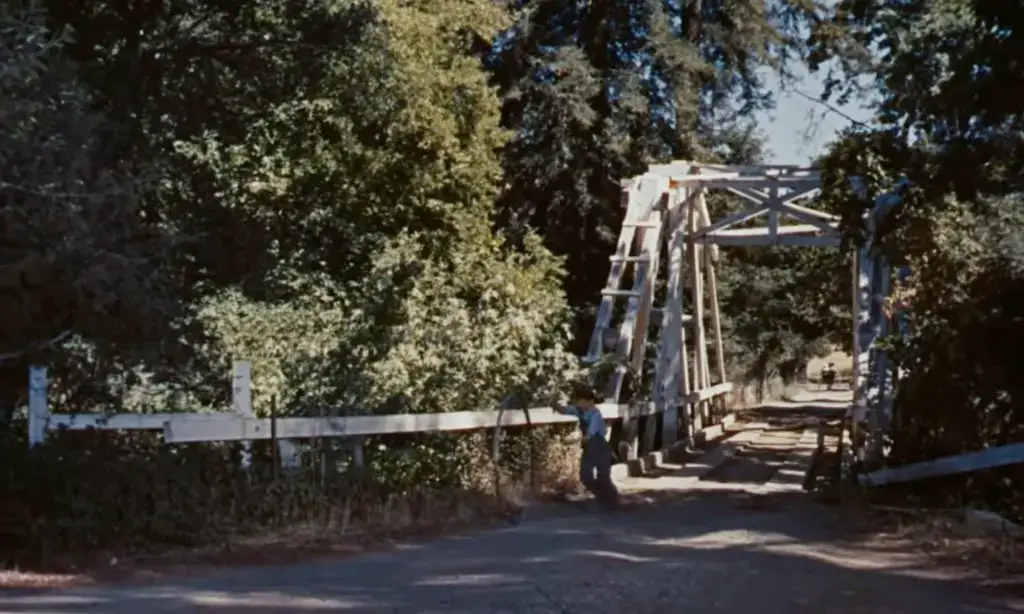
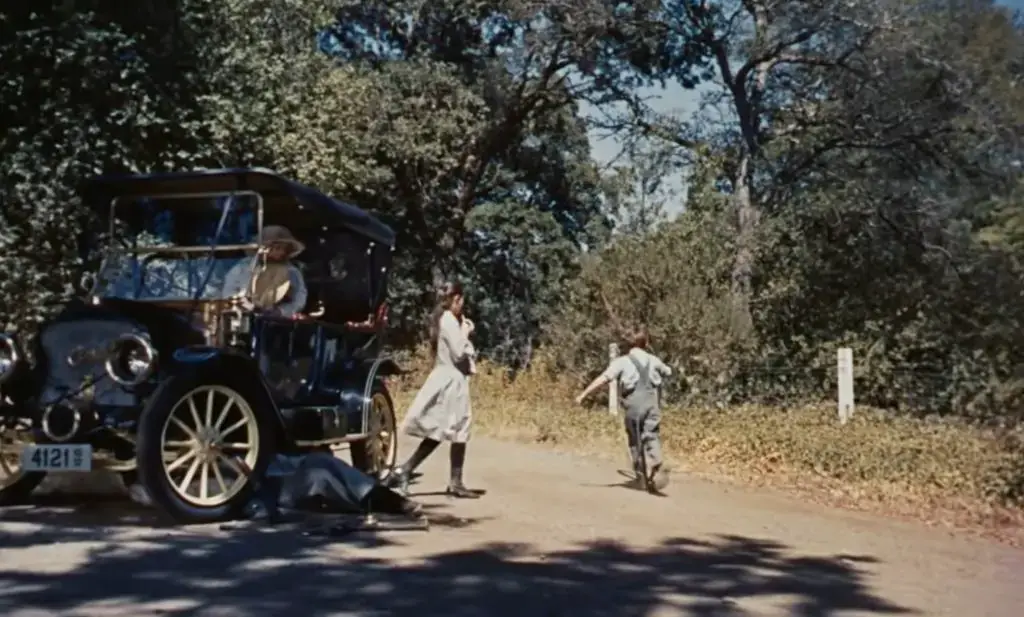
Jimmy next encounters a flock of sheep, crosses a rustic bridge, and passes a family dealing with their stalled horseless carriage. These scenes were also shot on location in Napa.
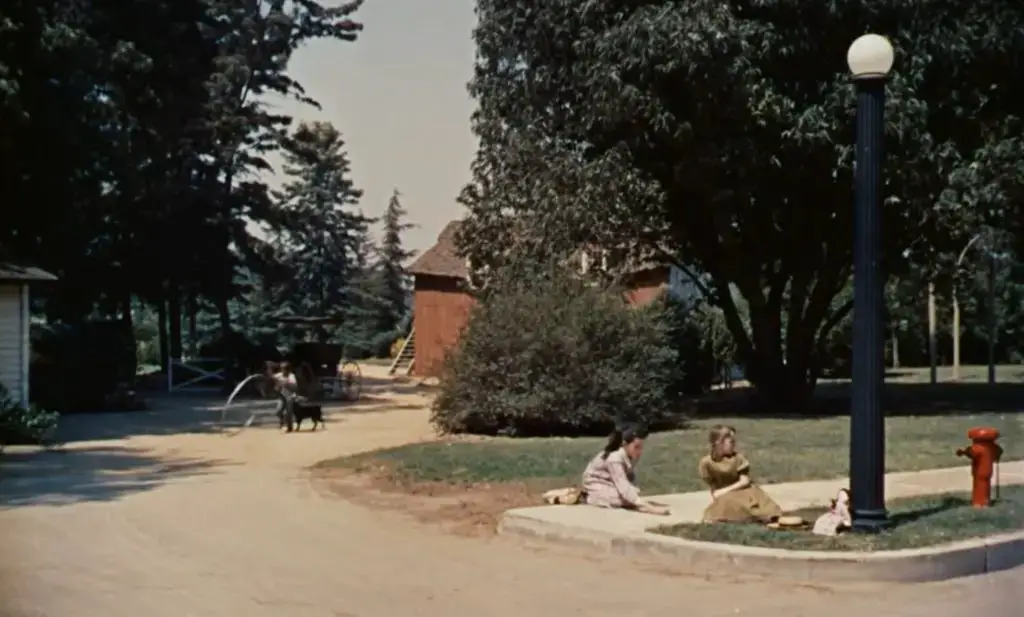

As Jimmy turns the corner, he enters a charming street in Harrington. Audiences are unaware that a simple edit has brought the boy and his rolling hoop from a backroad in Napa to the backlot of Universal Studios in Hollywood. As he startles a pair of horses, Jimmy continues past a small scale commercial building seen in countless Universal films and TV series.
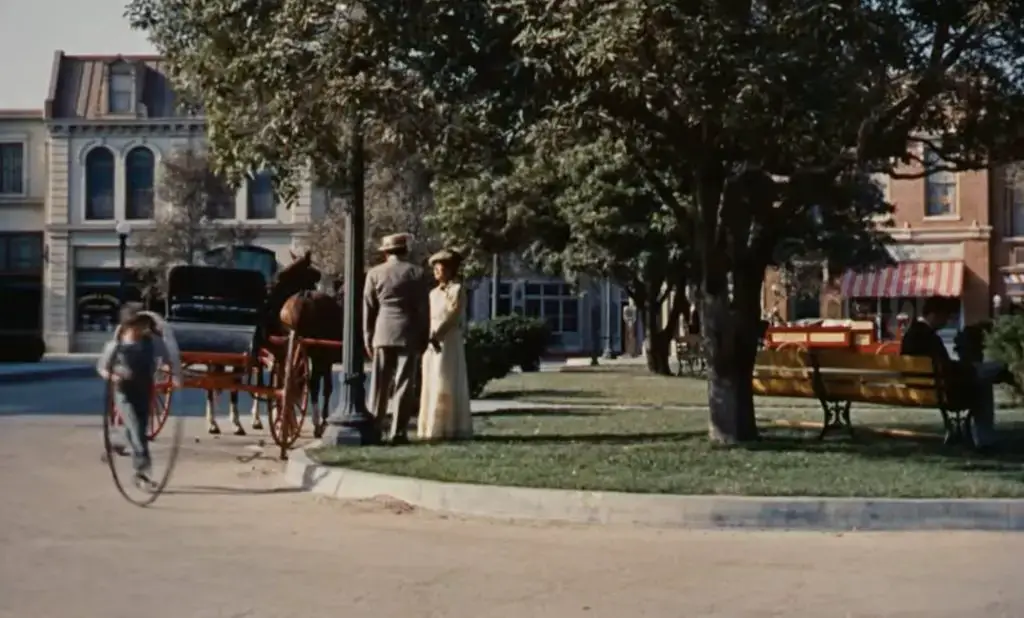

Another edit, and another backlot. As Jimmy ducks in and out of the hoop, he passes through the midwestern town square at the Warner Brothers Studio. If you are not sure just which is which, just note when the design of the street lamps abruptly changes.
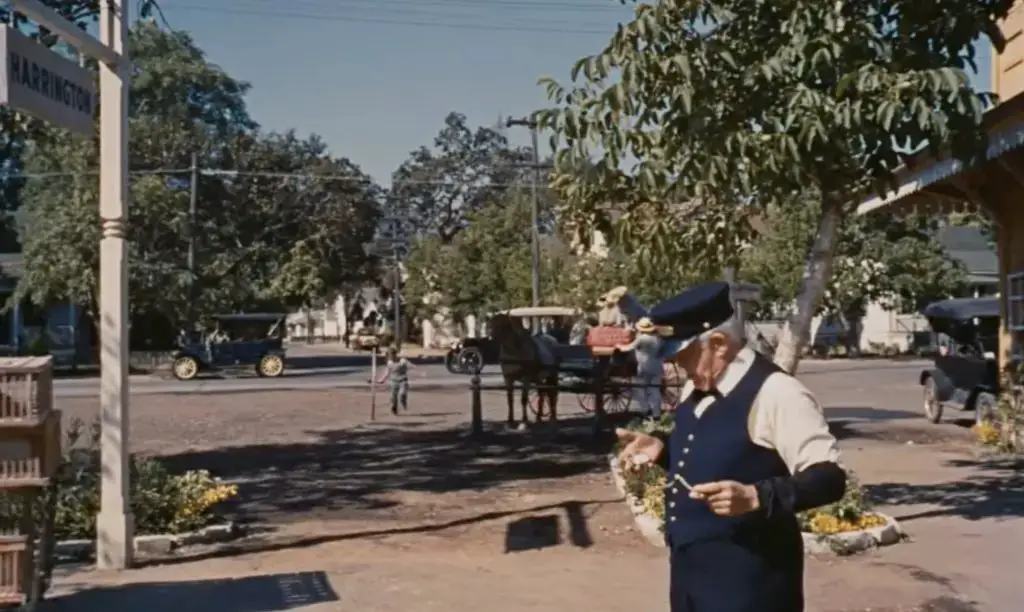

As the opening credits near an end, young Jimmy Bean approaches Harrington’s quaint railroad station. The building is the historic Southern Pacific station, which can still be found in St. Helena in Napa. And yes, this means Jimmy has just rolled that hoop back several hundred miles north of Hollywood.
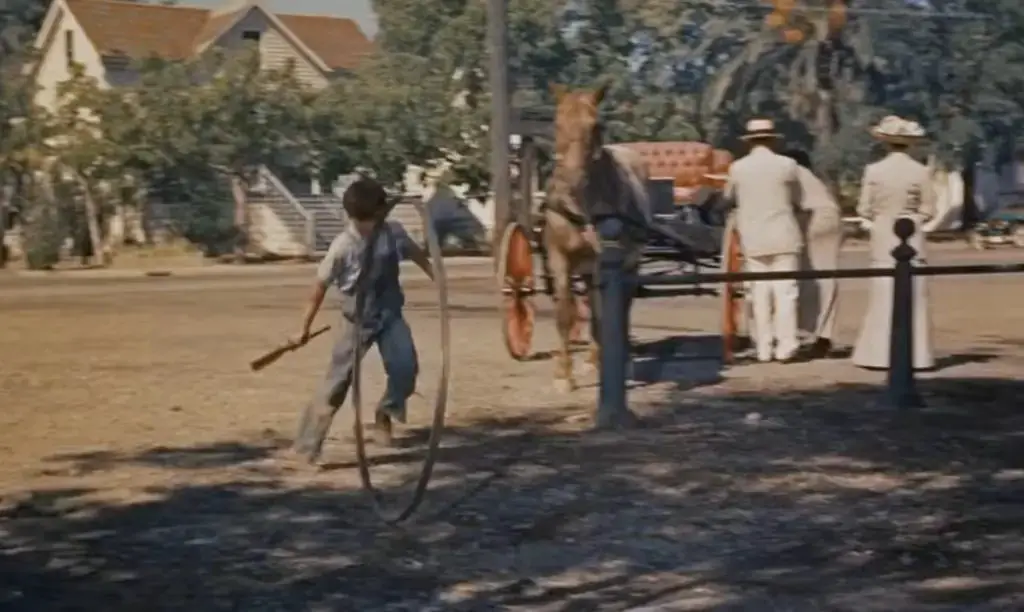
The original story of Pollyanna was set in the town of Beldingsville, Vermont. Disney moved it to Harrington, which based on dialogue is not far from Baltimore. Regardless of where this New England town is set, it is unlikely there would be a massive palm tree that can be briefly glimpsed in the background as Jimmy approaches the train station.

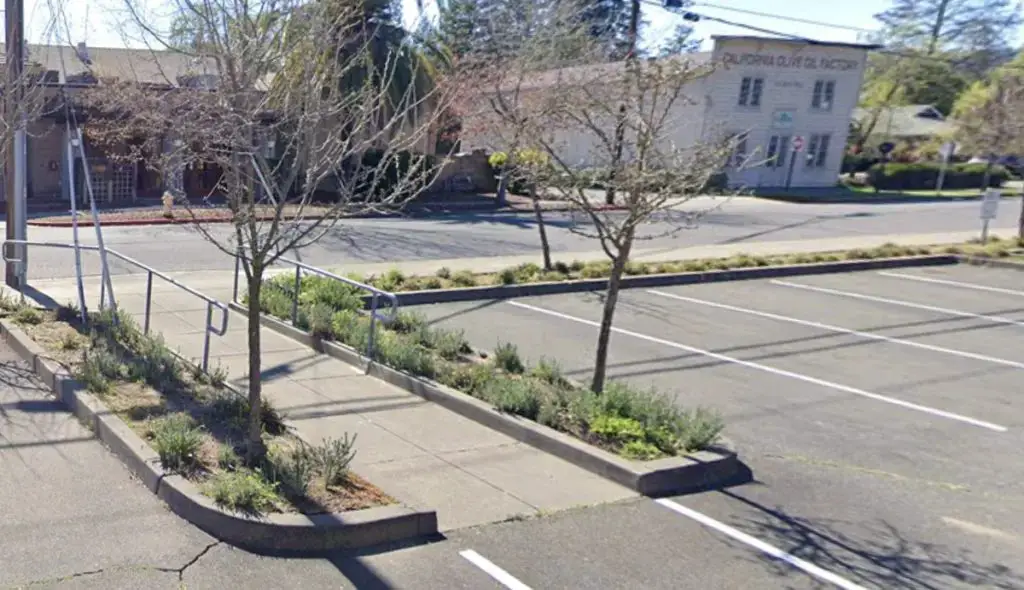
While the station has been altered since the film was made (it is today an office building), there is one building that looks almost exactly the same as it did in 1959. This is the restored California Olive Oil Factory, seen across the street from the station.
The opening credits for Pollyanna are just three minutes long, consisting mostly of a tracking shot of orphan Jimmy Bean rolling a hoop into town, ending up at the train station. It is a tribute to producer Walt Disney and his dedicated staff that this seamless appearing sequence covers eight different locations, hundreds of miles apart, shot over several days. It is a prime example of the meeting of Disney magic and movie magic.





